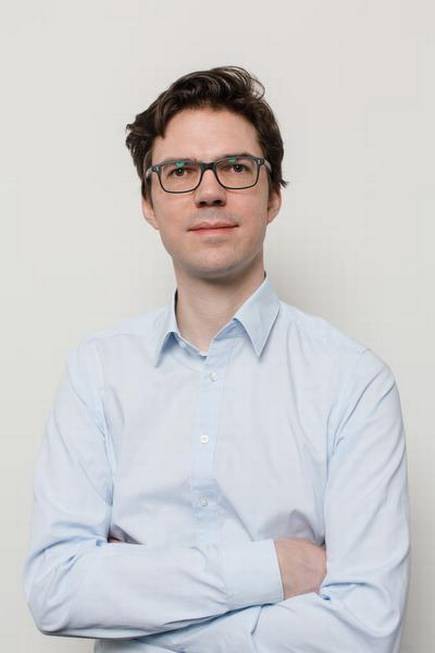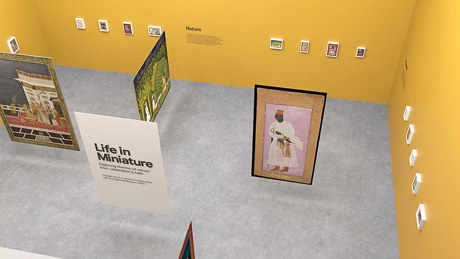In a stunning tech-meets-art collaboration, Google Arts & Culture has applied cutting-edge technology to virtually bring alive the heritage art tradition of miniature paintings. The exhibit in partnership with the National Museum in Delhi (for its India leg), is titled Life in Miniature and features artworks that tell stories of “nature, love, celebration, faith, and power” by allowing viewers to explore high-resolution miniatures using Machine Learning and Augmented Reality. The entire virtual collection includes 1,200 high-resolution images from 25 collections from around the world, from key international museums — including Calcutta’s Victoria Memorial Hall — and more than 75 stories, depicting scenes that include legendary marriage processions, the joy of being among nature, or epic battles.
Interactive options within this also include colouring options, a guided tour of the museum, zooming options to examine the minute details, projecting the museum into your living room and more, alongside content on the artwork available for viewing.
In a chat, Simon Rein, programme manager, Google Arts & Culture, tells us more about implementing technologies such as Augmented Reality and Machine Learning in the realm of art and especially the role they play in making the intricate finesse of miniature paintings accessible and enjoyable in its complete splendour. Excerpts:

Simon Rein. Sourced by The Telegraph
How was the idea of merging technology with tradition for the fruition of this virtual initiative conceived?
When I saw the miniature paintings at the National Museum, I was amazed at the level of detail and precision, despite their size. We thought it would be fantastic to use technology, like our ultra-high-definition robotic camera, to help people everywhere appreciate flourishes that you wouldn’t be able to see well with the naked eye. And we challenged ourselves to use even more technologies, like Augmented Reality (AR) and Machine Learning, to present these special works of art in immersive and interactive new ways. That’s how the idea for the digital Life in Miniature exhibition was born.
Can you take us through the basics of Machine Learning and AR used in this collaboration?
We applied Machine Learning for an experiment that we call ‘Magnify Miniatures’. It detects painted details — such as animals, earrings, flowers, and so on — from the collection of miniature paintings. With these details, it then finds connections among artworks that are hundreds of years apart. As for components involved, it’s a wide range of technologies that we used. We used AR to create the first AR-powered art gallery designed with traditional Indian architecture, inspired by the domes and doorways that punctuate Indian homes and public spaces. Using your smartphone, you can open up a life-size virtual space, walk around at your leisure and zoom into your favourite pieces — you have this beautiful museum to yourself!
What were the struggles or challenges involved in digitising this experience?
Like many initiatives across the world, ours too, was affected by the pandemic. We were deep into the collaboration with the National Museum on the ultra high-resolution digitisation of its miniature paintings collection, and paused the effort. While a stunning set of artworks did get digitised, we were — and are — eager to do more, and look to resuming as the circumstances permit.
How did you ensure that aspects such as the finesse of the art practices and their traditional aesthetics were maintained in this digital experience?
We used technology to try to capture as much detail of the art as possible. For example, we used our Art Camera technology to capture many of these miniature paintings. The Art Camera can digitise artworks in ultra high resolution, and make them accessible in ways never seen before. A robotic camera, it captures brushstroke-level details, allowing visitors to discover details of the artwork far beyond what is visible to the naked eye.
There are also provisions for an interactive experience in the form of colouring some of these artworks or learning about the themes and leitmotifs too. What kind of groundwork went into such an extensive amount of digitisation?
The goal was to create an activity around miniature paintings the whole family can enjoy — we felt that’s particularly important in these times. And that’s how we came up with the idea of a Colouring Book with some of the artworks the partners had shared.
What, according to you, is the future of art exhibitions or art in museums in India?
This is a question we find interesting ourselves! Future Relics, our recent collaboration with Mumbai’s Chhatrapati Shivaji Maharaj Sangrahalaya, brought artists, curators and technologists together around a question — “What object would you like archaeologists 1,000 years from now to remember our present day culture by?” Presented as part of the landmark India and the World exhibition, we invited visitors to respond to this question and by doing so, their responses contributed to the design of a growing collection of vases, representing the objects that matter the most to people today. Visitors shared their object in diverse voices — be it Hindi, Marathi or English. We look forward to continuing our working with cultural institutions in India and around the world on technology that gives people access to the world’s treasures and encourages them to engage with art and culture in new ways.










